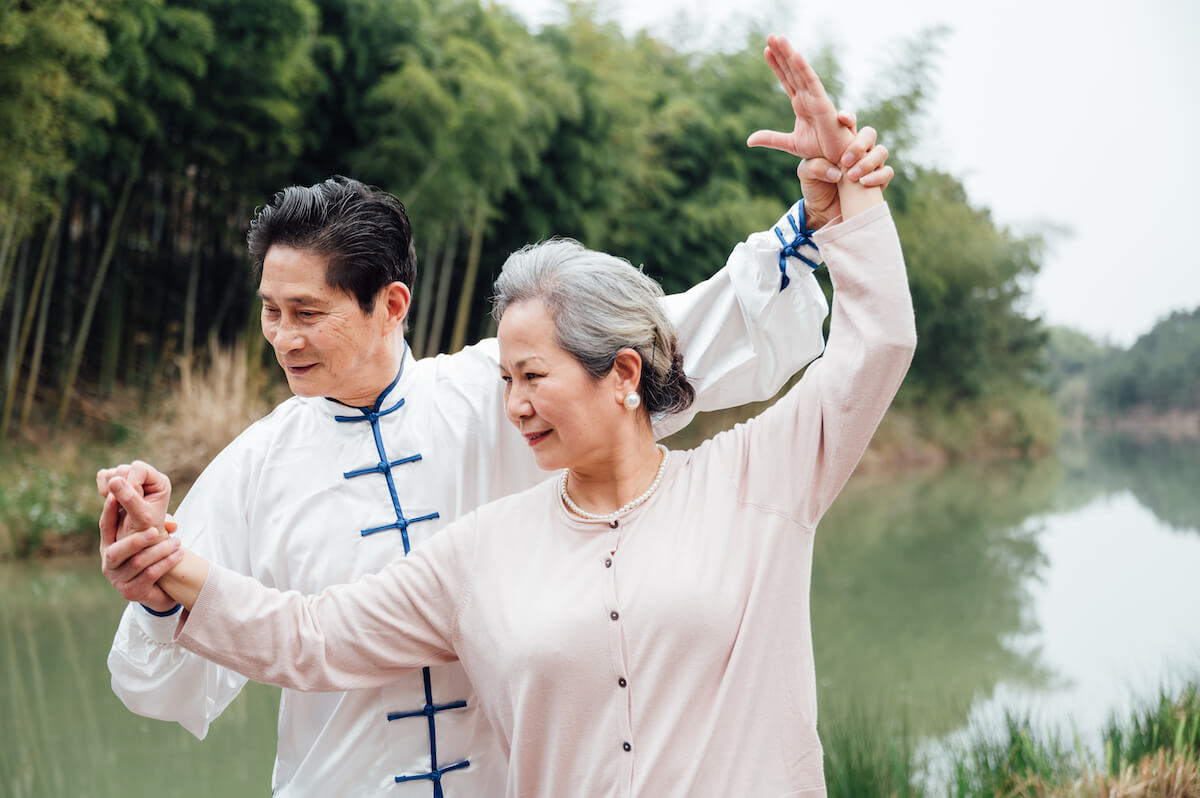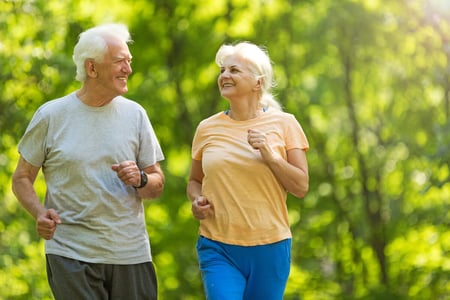
It’s no secret or surprise that maintaining an active lifestyle is a critical element of healthy aging. As you age, physical activity can help prevent chronic illness, prolong independence, enhance overall well-being, and even increase longevity.
Fortunately, you don’t need to strain yourself with intense or vigorous exercises to gain these health benefits. A brisk walk or a quick dance session can get your heart rate going and improve your stamina. There are also strengthening exercises, like yoga and Tai Chi, that are great for older adults because of the gentle and guided movements.
As an independent living, assisted living, and memory care provider, Origin Active Lifestyle Communities is taking a look at Tai Chi vs. yoga—including what they are, the differences between them, and how they can benefit older adults.
Tai Chi vs. Yoga
Both Tai Chi and yoga focus on gentle movements, syncing up the breath and body and incorporating meditation and mindfulness into the practice. When looked at closely, though, you’ll discover that each exercise is unique.
Yoga
Yoga is an ancient practice that was developed in India around 5,000 years ago. Many people who practice yoga believe that it’s also a spiritual discipline and even a way of life in addition to being a physical exercise. Typical yoga practice involves holding poses or postures, breathing techniques, and meditation—which often strengthens and stretches the body.
Tai Chi
Also an ancient practice, Tai Chi originated as a martial arts practice in 17th century China. Like yoga, Tai Chi is a mind-body practice that incorporates gentle movement, breathing, and meditation. The main difference between the two is that while yoga uses poses and stillness to achieve goals, Tai Chi is performed in a dance-like manner, with consistent movement and flow.
Benefits of Yoga and Tai Chi
Despite being low-impact, low-intensity exercises, both yoga and Tai Chi have countless benefits for the mind, body, and spirit and are associated with a longer life expectancy.
Improves strength, flexibility, and balance: A good yoga practice can work just about every muscle in the body, resulting in a full-body workout. The nature of yoga is based on holding poses for a given amount of time, so it offers the opportunity to build strength and enhance flexibility.
Tai Chi also improves balance and motor functioning, which can help in reducing falls and other accidents. In addition, Tai Chi provides a full-body workout—boosting both upper and lower body strength.
Helps with opening up muscles and relieving pain: One of the great things about yoga is that each practice can be targeted to a specific area of the body. Some of the most popular yoga poses incorporate deep stretches for common pain points, including the back, neck, and hips.
When comparing Tai Chi vs. yoga, Tai Chi is not as focused on deep stretching. Still, there is some evidence that practicing Tai Chi regularly can reduce pain and inflammation from conditions like arthritis.
Reduces feelings of stress and anxiety and enhances mood: Anyone who has ever done a yoga practice knows how relaxing it can be. Yoga has been shown to improve mental and emotional health and improve sleep, mood, and overall well-being.
Like yoga, the slow, mindful breaths and movements associated with Tai Chi have been shown to reduce stress and anxiety, improve sleep, and even enhance mood.
In addition to these, both yoga and Tai Chi have many other benefits, including improved health habits and joining a community of other like-minded individuals.
Getting Started
It can be intimidating to learn a new form of exercise, especially Tai Chi and yoga, which both appear challenging to learn on your own. Here are some tips for getting started with either of these practices.
- Find a local class—many gyms, health clubs, and senior centers offered guided lessons. Both yoga and Tai Chi are best practiced under an instructor who can guide you through the movements and show you correct forms and postures.
- Recruit a friend. If you are intimidated by doing these exercises alone, consider asking a friend to join you! Not only can this be a fun and healthy way to socialize, but it can also keep you both accountable.
- Listen to your body. Yoga and Tai Chi are both practices that are supposed to challenge you but not hurt you. If you find that you can’t do a specific pose or movement, don’t be afraid to find a modification that feels better.
- Be patient and consistent. Learning the art of yoga or Tai Chi requires consistent practice and patience, and progress won’t happen overnight. If you can’t master a pose or movement, keep trying and working on it. You’ll be amazed at what your body can do after months of regular practice!
Find What’s Best For You
If you’re looking for a low-intensity way to get active and exercise, yoga or Tai Chi are both great options. Ultimately, they are incredibly similar in history, practice, and health benefits. The main difference lies in how they are performed—yoga being more static and Tai Chi being more fluid. At Origin, we encourage you to find what works for you, and most importantly, what you enjoy.
···
Origin Active Lifestyle Communities has active senior living and assisted living communities throughout western Canada, including Calgary, Canmore, and Vancouver Island. Our communities are dedicated to offering an active and engaging lifestyle for our community members, even providing guided fitness classes like yoga and Tai Chi. For a closer look at our communities, we invite you to contact us!




